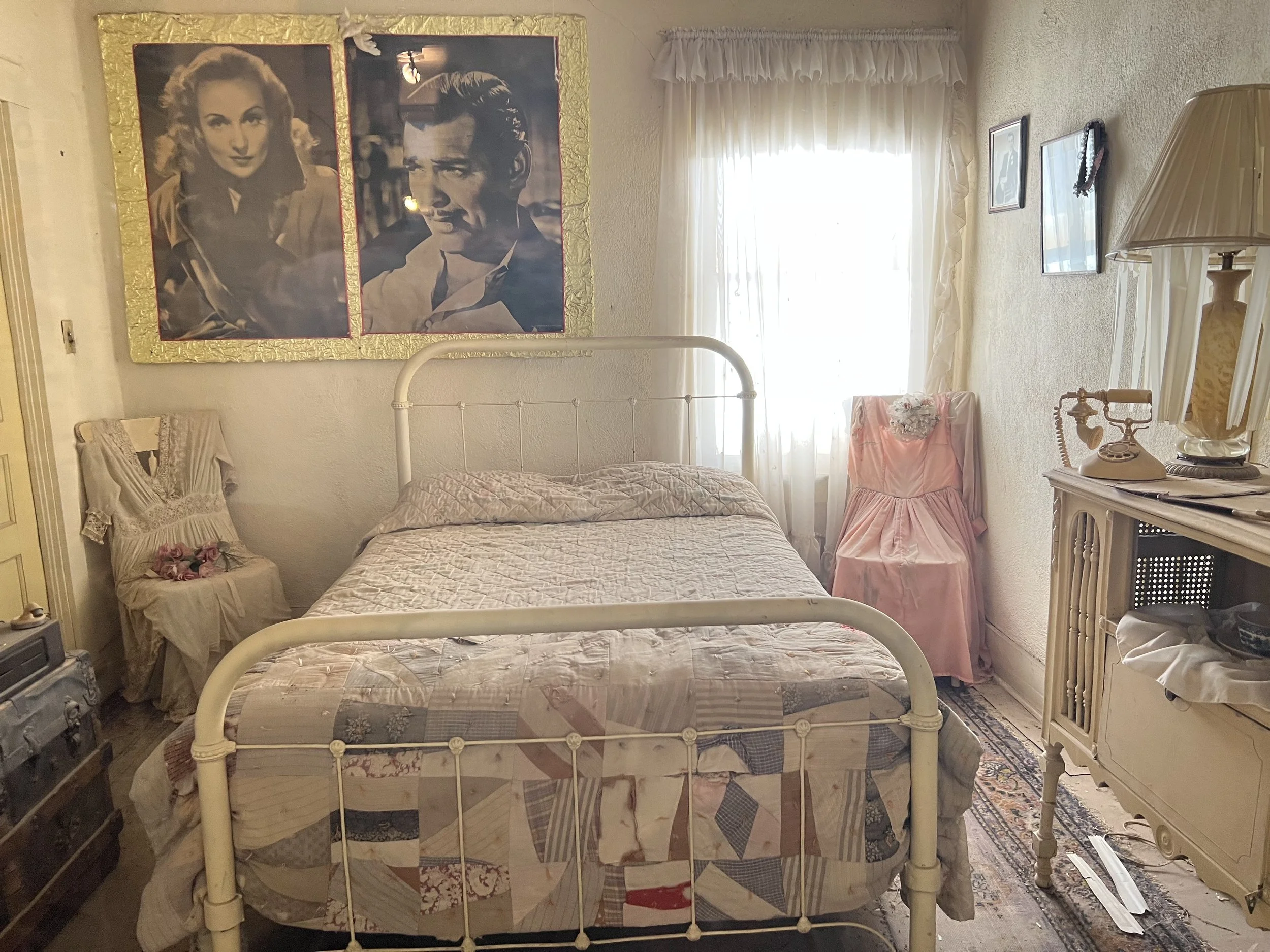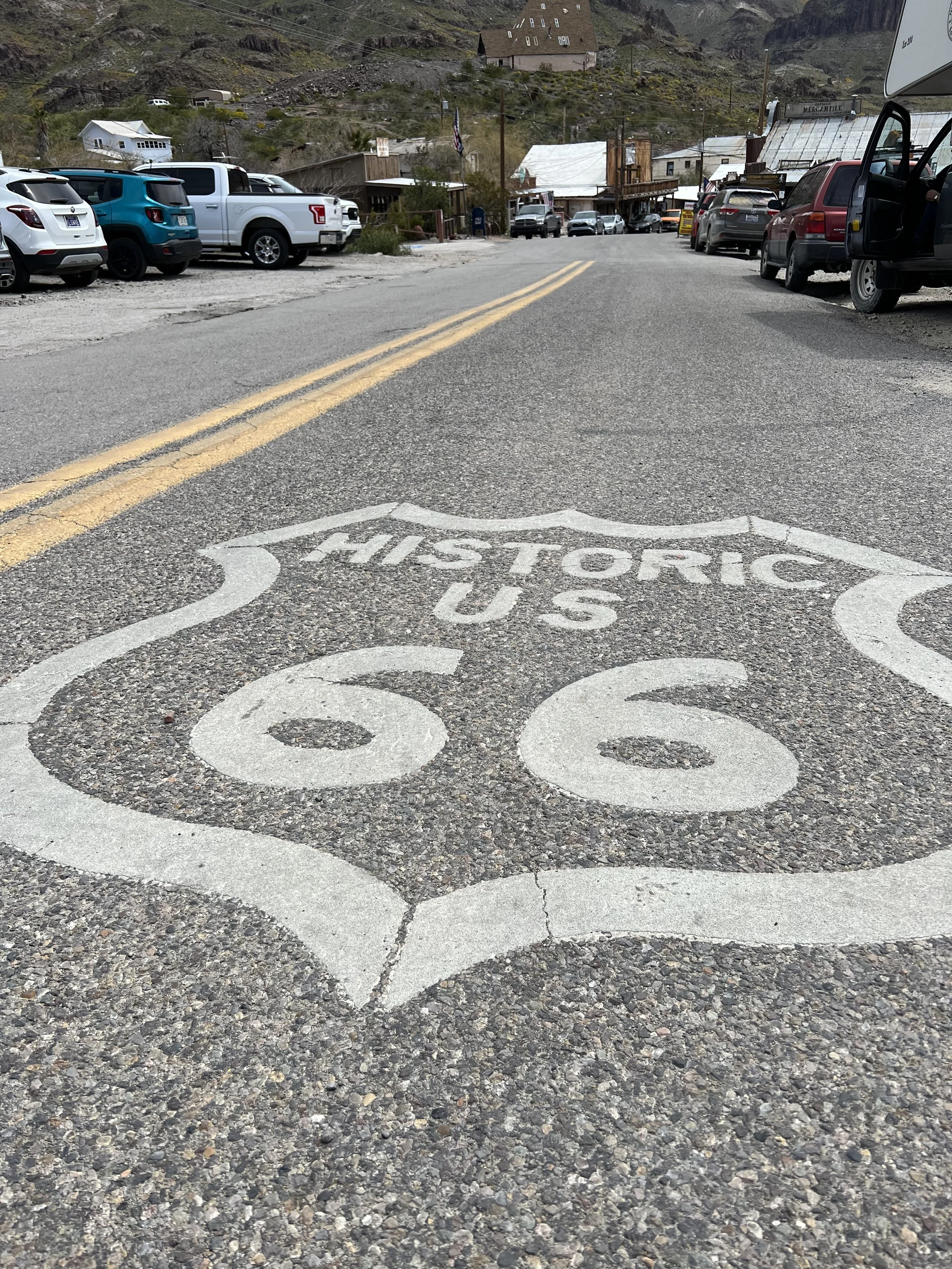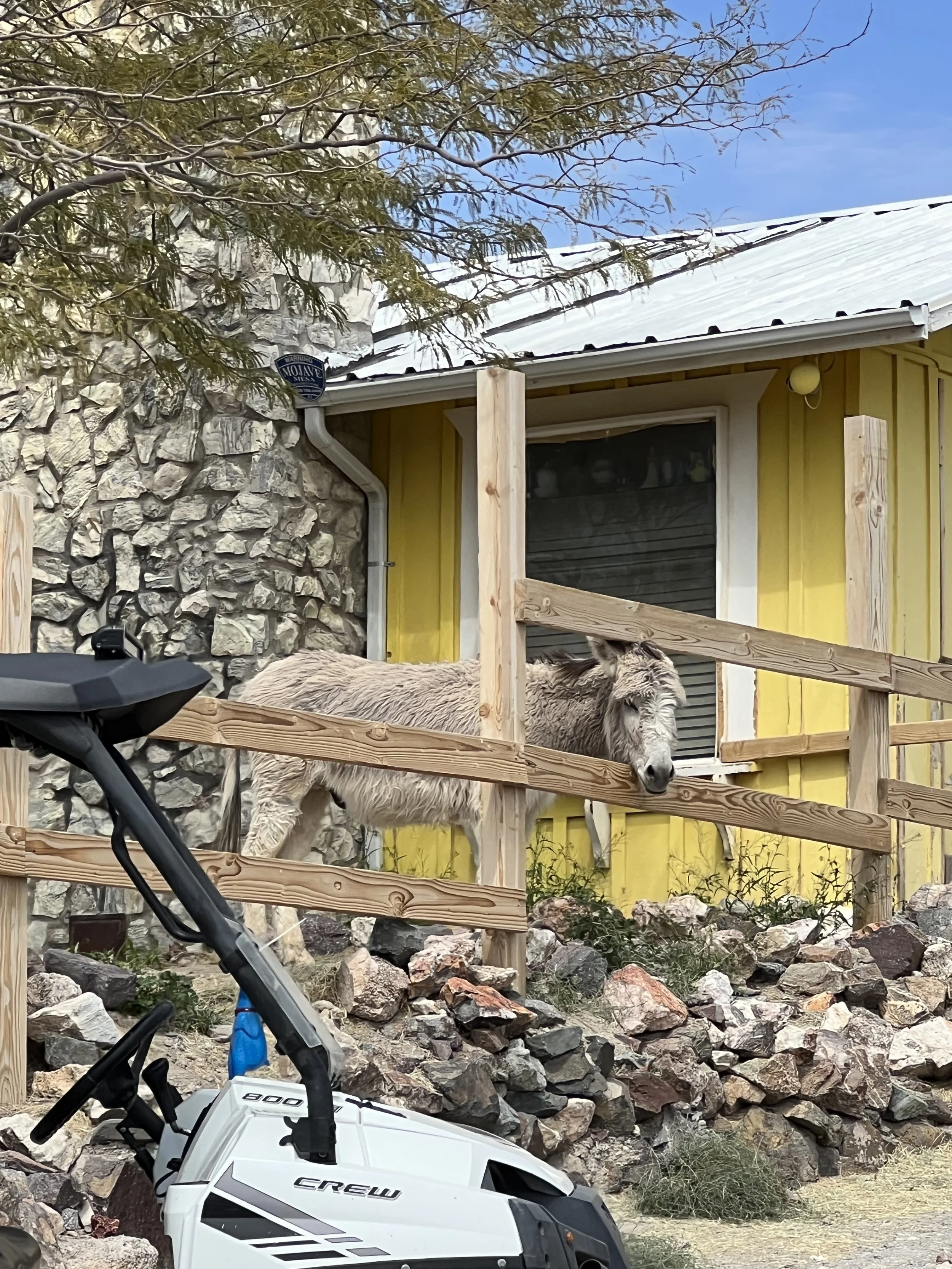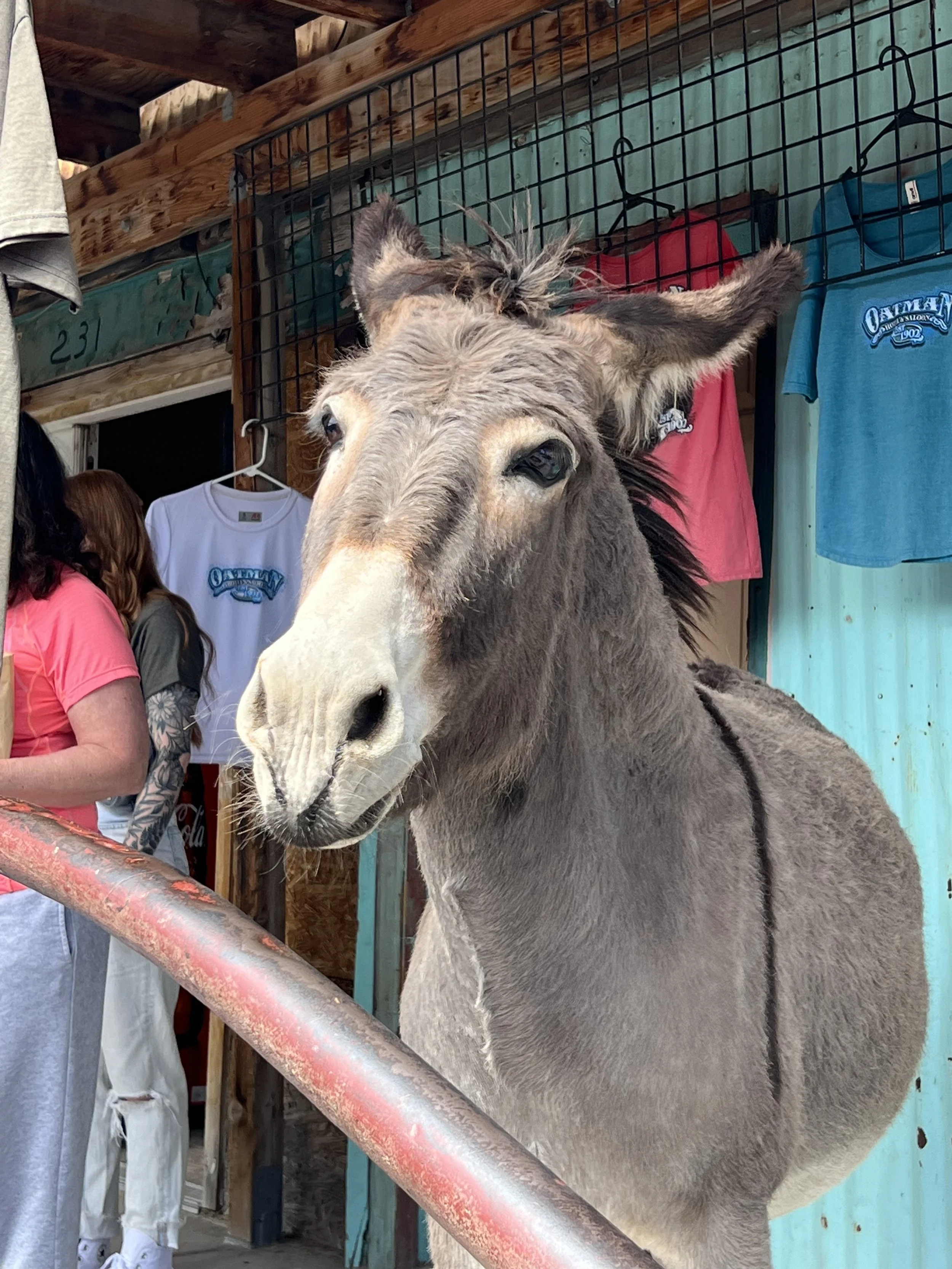Exploring Oatman, Arizona
Ever since moving to Arizona in the fall of 2000, I’ve been obsessed with finding and visiting ghost towns in the state. Naturally, on our way back from Las Vegas, Blackbeard and I stopped at one that had been at the top of my list and also happened to be along the historic Rte. 66 - Oatman.
… Read on for a complete list of things to see and do!
Jump To:
Where to Stay
NOTE: Because Oatman is a ghost town, the best places to stay are in Kingman, Arizona ; Laughlin, Arizona; and Bullhead City, Nevada. You can also take a day trip from Las Vegas by tour bus.
Best Western Colorado River Inn (Nevada)
Home 2 Suites by Hilton Kingman (Kingman)
Where to Dine
NOTE: Because Oatman is a ghost town, options are limited. It is suggested you dine wherever you are staying and/or in Kingman.
Cellar Door Wine Bar (Kingman)
Dambar & Steak House (Kingman)
Judy’s Saloon (Oatman)
Ma & Pa’s Hot Rod Café (Kingman)
Mattina’s Ristorante Italiano (Kingman)
Mr. D’z Route 66 Diner (Kingman) - Oprah and Gayle King have dined there.
Sirens’ Cafe (Kingman)
The Oatman Hotel & Saloon - The hotel portion is now a museum but you can still dine there (there is also an ice cream parlor attached it it).
Things to See & Do
There were three things I wanted to do when I got to Oatman: Eat at the surviving hotel, see Clark Gable and Carole Lombard’s wedding night room, and pet the wild donkeys. Check out the video below to see if I checked everything off my list
Gold Rush Candy Shoppe
It’s an old-fashioned, wild-west candy shop like you’ve never seen before. There’s a great selection of chocolates and penny candie, plus an array of homemade goodies (including prickly pear candy).
Oatman Hotel (formerly Durlin Hotel)
Originally named after its builder in 1902, John Durlin, the Durlin Hotel is the only historic two-story adobe building in Mohave County. The eight-room hotel did a booming business with local miners who began the practice of covering the hotel’s walls and ceiling with signed and dated one-dollar bills. In addition, Clark Gable and Carole Lombard honeymooned at the Durlin Hotel after their wedding in Kingman, Arizona in 1939 (they returned several times afterward). The honeymoon suite is still one of the Oatman Hotel’s main attractions, and the owners report that Gable and Lombard loved the hotel so much that they are still haunting it.
It’s also been numerously reported that whispering and laughing can be heard in empty rooms, with one friendly poltergeist, Oatie (the ghost of William Ray Flour, an Irish miner who died behind the hotel) haunting it the most.
It wasn’t until the late 1960s that the Durlin Hotel’s name was changed to the Oatman Hotel.
Our experience: It was amazing to experience the long history of such an iconic place - one that has remained in-tact for nearly 100 years (what amazed me was the thick layer of dust on the record player and the eroding persian rug under the bed of Clark Gable and Carole Lombard’s suite. The restaurant was also very rustic with a good outdoor seating area and simple western-style food. We capped it off with ice cream from Thrifty in another section of the hotel.
Oatman Mine Museum
One of the greatest things about Oatman is how in-tact they’ve left what is left of the town, including the mine shaft. It’s free to enter and quite spooky!
PRO TIP: Wander through the other recreated buildings in that area, including the saloon, the escape room, and the remnants of another hotel that has preserved two rooms for you to see from the outside.
Oatman Shootout
Every day at 1:30pm and 3:30 pm, traffic stops in the town for a wild-west shootout re-enactment. The Oatman Ghost Rider Gunfighters are the oldest gunfighter group in Arizona, and they’re not to be missed.
Snap a pic with the Rte. 66 sign
If you head north away from the main part of the town (a few hundred feet away), you will see the painted Rte. 66 road sign!
Walter the Orphaned Burro
One special burro went from “wild” in 2018 to living his best life in an adopted home. When he was just a foal. Walter was abandoned by his mother (you will see that his hair is different from other donkeys) and found by Kelly and Brad Blake who immediately took him in (with their two dogs). Since then, Walter has become the unofficial mayor of the town and has no clue he’s actually a donkey as he sleeps in the house with the rest of the family and goes on walks with them, too! There are children’s books written about him, which can be purchased here.
Wild Burros
The Oatman burros are direct descendants of those used by the gold miners in the late 1800s. When the mines closed, deflated prospectors turned the animals loose to fend for themselves. Today, these wild burros (about 2,000 total) roam the streets during the day and head into the Black Mountains at night to graze. After years of receiving handouts from tourists, they are extremely friendly (they will nuzzle up and eat your ice cream if you’re not careful)!
A History Summary
1851-1856 - The name “Oatman” was chosen in honor of Olive Oatman, a young Illinois girl who was captured and enslaved by Yavapai Indians during her pioneer family's massacre while on their journey westward in 1851. She was later traded to the Mohave people, who adopted her and tattooed her face in the custom of the tribe. She was released in 1856 at Fort Yuma.
1863 - Prospector Johnny Moss discovered gold in the Black Mountains and staked several claims, one named ‘the Moss’ after himself and another after Olive Oatman. For the next half-century, mining waxed and waned in the remote district until new technology, reduced transportation costs, and new gold discoveries brought prosperity to Oatman in the early 20th century.
1915-1927 - The opening of the Tom Reed mine, followed by the discovery of a rich ore body in the nearby United Eastern Mining Company's property in 1915, brought one of the desert's last gold rushes. The boom of 1915–17 gave Oatman all the characters and characteristics of any gold rush boomtown (including making it home to more than 10,000 people). For about a decade, the mines of Oatman were among the largest gold producers in the American West.
1921 - A fire burned down many of Oatman's smaller buildings, but spared the Oatman Hotel, built in 1902. It remains the oldest two-story adobe structure in Mohave County and is a Mohave County historical landmark. One of the hotel's major attractions is a room designated as the suite where Clark Gable and Carole Lombard spent their honeymoon after their 1939 wedding in Kingman, Arizona.
1924 - The town's main employer, United Eastern Mines, permanently shut down its operations after producing $13.60M (equivalent to $215,038,447 today) worth of gold at the government-controlled market value of $20 per ounce.
1930’s - The town boasted two banks, seven hotels, 20 saloons, and 10 stores.
1941 - The district had produced $40M (equivalent to $736,923,000 today) in gold by 1941, when the remainder of the town's gold mining operations were ordered shut down by the government as part of the country's war effort.
1941 - 1953 - Oatman was fortunate it was located on the busy U.S. Route 66 and was able to cater to travelers driving between Kingman, Arizona and Needles, California, though that advantage was short-lived. In 1953 a new route was built between Kingman and Needles, completely bypassing Oatman.
1960s - Oatman was all but abandoned by the 1960s, leaving everything in a state of horrible disrepair and only 100 residents left. It also became one of the filming locations for How the West was Won.
1970s - 1980s - In nearby Laughlin, Nevada the town started building up as a popular gambling mecca, and in the late 1980s, Route 66 again became a popular destination for tourists from all over the world.
1995 - 1998 - The Gold Road mine was reopened, taking out 40,000 ounces of gold annually. In 1998, the mine closed again due to low gold prices, though provided gold mine tours instead for several years (note that the mines have reopened with the strength of gold value).
2023 - The town survives as a nostalgic Route 66 stop that prides itself on maintaining a Wild West feel down to the wooden sidewalks, staged shootouts, and kitschy shops. About 500,000 visit the town annually.




